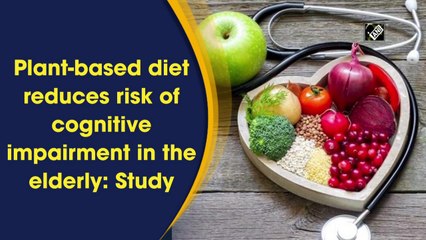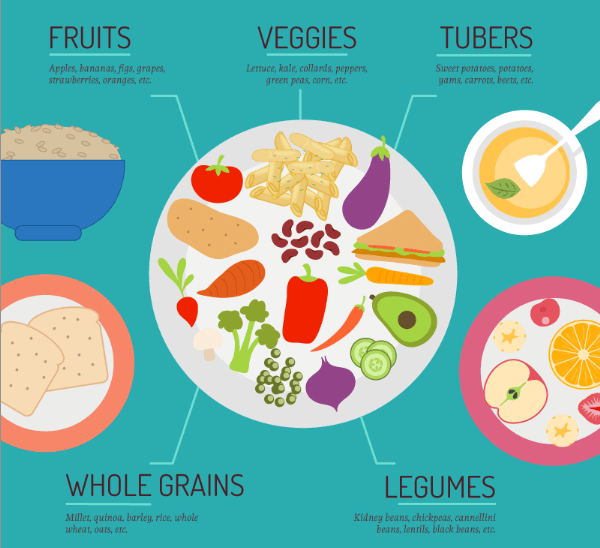
A vegetarian diet is a great way to have a positive effect on the environment. This diet has many advantages, such as a reduced risk of certain health conditions, reduced demand for clear cutting, and minimal water use.
Lower risk for many types of health conditions
Research shows that vegetarians are more likely to be diagnosed with a wide variety of illnesses and cancers. The results of a meta-analysis of data from eight prospective cohort studies suggest that vegetarians are at a lower risk of colorectal cancer than meat eaters. This could be because of differences in BMI.
Vegetarian diets have lower cholesterol levels and saturated fats than those based on meat. A vegetarian diet also contains more dietary fiber and potassium, magnesium, as well as folic acid. It also contains phytochemicals, which are plant-based substances that can reduce total cholesterol levels. Vegetarians are more likely to have lower blood pressure (BMI) and body mass (BMI) than non-vegetarians. These factors have been shown to be associated with lower rates of chronic illness.

Reduced demand for clear-cutting
A new study has shown that vegetarianism can significantly lower greenhouse gas emissions than agriculture. Emissions can be cut by more than half if you eat a vegetarian diet. This is in contrast to current diets. Around half of the world’s carbon budget is due to emissions from agriculture.
A vegetarian diet would reduce the demand for land for animal feeding by up to 600 million ha by 2050. Animal farming is the largest land-use activity on Earth and leads to the most deforestation. By switching to vegetarianism, farmers will be able to use 70% less land. Veganism could save the lives more than 5 million people in 2050. A vegan diet could save healthcare costs up to $1 billion per annum by midcentury.
Minimized impact upon wildlife habitats
One way to minimize the effect of vegetarianism on wildlife habitats is to eat only plant-based foods. Vegetarians avoid meat, fish and shellfish. Their intake can be reduced by as much as 70%. Also, vegetarians do not protect animals against slaughter.
Each year, the average vegetarian saves around 406 lives. These animals are usually rescued from certain death or horrible circumstances and not kept anywhere. A vegetarian diet protects habitats and ensures that non-farmed animals remain in their natural habitats.

Minimize the impact on water use
Simple changes in your diet can reduce the impact of vegetarianism upon water consumption. If you eat less meat than you would if your diet were vegan, you will use less water. Animal agriculture also requires huge amounts of water and generates a lot of animal waste.
FAQ
How to measure body weight?
A Body Fat Analyzer can be used to measure body fat. These devices are used to determine the body's percentage for people who want weight loss.
What is the difference in a virus and bacteria?
A virus is an organism microscopic that can't reproduce outside its host cells. A bacterium (or single-celled organism) reproduces by splitting itself into two. Viruses are very small (about 20 nanometers) while bacteria are larger (up to 1 micron).
Viruses are spread via contact with infected bodily liquids such as urine, saliva, semen and vaginal secretions. Bacteria can be spread by direct contact with infected objects and surfaces.
Viruses can get into our bodies through cuts and scrapes on the skin, bites or other injuries. They can also penetrate the nose, lips, eyes and ears, vagina,rectum, or anus.
Bacteria can get into our bodies through cuts, scrapes and burns, insect bites, or other skin breaks. They may also come into our bodies through food, water, air, soil, dust, or animals.
Both bacteria as well as viruses can cause illness. Viruses can not multiply in the host. So they only cause illnesses when they infect living cells.
Bacteria can cause illness by multiplying in the body. They can spread to other parts of our bodies. They can even invade other parts of the body, which is why antibiotics are necessary to eradicate them.
Supplements and herbs can improve immunity
It is possible to boost immune function by using herbs and natural remedies. You can use ginger, garlic, echinacea oregano oil and ginkgo loba as common examples to boost immune function.
However, these herbal remedies should not replace conventional medical treatment. Side effects include nausea, dizziness and stomach cramps.
What are the 10 best foods to eat?
These are the top 10 foods to eat.
-
Avocados
-
Berries
-
Broccoli
-
Cauliflower
-
Eggs
-
Fish
-
Grains
-
Nuts
-
Oats
-
Salmon
Why is it so important to lead a healthy lifestyle
Healthy lifestyles lead to happier and longer lives. Healthy eating habits, regular exercise, healthy sleep habits, stress management, and good sleep habits can help to prevent heart disease, stroke, diabetes, cancer, and other serious diseases.
Healthy lifestyles will help us to cope with daily stresses better and improve our mental health. A healthy lifestyle will help you feel more confident and younger.
Statistics
- nutrients.[17]X Research sourceWhole grains to try include: 100% whole wheat pasta and bread, brown rice, whole grain oats, farro, millet, quinoa, and barley. (wikihow.com)
- Extra virgin olive oil may benefit heart health, as people who consume it have a lower risk for dying from heart attacks and strokes according to some evidence (57Trusted Source (healthline.com)
- According to the Physical Activity Guidelines for Americans, we should strive for at least 150 minutes of moderate intensity activity each week (54Trusted Source Smoking, harmful use of drugs, and alcohol abuse can all seriously negatively affect your health. (healthline.com)
- According to the 2020 Dietary Guidelines for Americans, a balanced diet high in fruits and vegetables, lean protein, low-fat dairy and whole grains is needed for optimal energy. (mayoclinichealthsystem.org)
External Links
How To
What does the term "vitamins" mean?
Vitamins can be described as organic compounds found in food. Vitamins allow us to absorb nutrients from food. Vitamins cannot be produced by the body. They must be obtained from food.
There are two types: water-soluble and fat-soluble vitamins. Water-soluble vitamins dissolve readily in water. Examples include vitamin C,B1 (thiamine), B2 (riboflavin), B3 (niacin), B6 (pyridoxine), folic acid, biotin, pantothenic acid, and choline. The liver and fatty tissues are home to fat-soluble vitamins. These include vitamin D, E and K, as well as beta carotene.
Vitamins can be classified according to biological activity. There are eight major types of vitamins.
-
A - vital for normal growth and maintaining good health.
-
C – essential for proper nerve function.
-
D - Vital for healthy bones and teeth
-
E - needed for good vision and reproduction.
-
K - essential for healthy nerves, muscles, and joints.
-
P - Vital for strong bones and teeth.
-
Q - Aids in digestion and absorption.
-
R – Required for making red blood vessels.
The recommended daily allowance of vitamins (RDA), varies depending upon age, gender, physical condition, and other factors. The U.S. Food and Drug Administration has established the RDA values.
For example, the RDA for vitamin A is 400 micrograms per dayfor adults 19 years or older. Pregnant women require 600 micrograms daily to support fetal development. Children ages 1-8 require 900 micrograms per day. Babies under one-year old need 700 micrograms per daily. Between 9 and 12 month, however, this drops to 500 mg per day.
Children between the ages of 1-18 need 800 micrograms per daily for obesity, while those overweight require 1000 micrograms. To meet their nutritional needs, children underweight and obese need 1200micrograms.
Children ages 4-8 years who have been diagnosed with anemia need 2200 micrograms per day of vitamin C.
2000 micrograms is the minimum daily intake for general health in adults older than 50 years. Women who are pregnant or breastfeeding need 3000 micrograms per day due to increased nutrient requirements.
Adults over 70 require 1500 micrograms each day, since they lose approximately 10% of muscle mass each decade.
Women who are pregnant and lactating need more nutrients than the RDA. Pregnant woman need 4000 micrograms daily in pregnancy and 2500 per day after childbirth. Breastfeeding mothers need 5000 micrograms per day when breast milk is being produced.